LOOP HEAD – an area of striking Geological spectacles
Loop Head (The Leap) is a Peninsula in south County Clare, Ireland. The south shore marks the beginning of the Shannon River whilst the west shore is buffeted with the Atlantic Ocean.
The cliffs on the west side of the Peninsula are dramatic with sea arches, sea stacks, caves, and vertical cliffs some reaching heights of 214 metres (712 feet). all formed by the pounding of the wild Atlantic seas over the last 7 or 8 million years. There are very accessible cliff walks and are free to access; the sea stacks and rugged cliffs and wildlife provide endless fodder for the camera.
In sharp contrast to these dramatic cliffs on the west coast, the south eastern shoreline on the Lower Shannon Estuary presents a different picture of gently sloping sandstone shores where river and tidal processes have etched the rocky faces formed secluded beaches and mud flats harbouring a variety of wildlife, plants and insects.
The EDEN project. In 2010, the Loop Head Peninsula was awarded the European Destination of Excellence Award (EDEN) which is a EU accolade for emerging tourism destinations which are developing in a responsible and sustainable manner.
I hadn’t been on Loop Head for about twenty years and until this trip I discovered that I really knew little about the Peninsula. I had been in Kerry for the start of my road trip and crossed the Shannon River on the Tarbert Ferry which departs Tarbert and sails into Kilimer in south County Clare, a journey of about fifteen minutes.
From Killimer I drove as far as Lisdeen and turned left into the Loop Head Peninsula heading directly for “Bridges of Ross” located about a third of the way to the southernmost tip. Here there are stunning examples of cliff bridges, amazing architectural shapes and a ragged shoreline of cliffs, the tallest towering up to 214 meters 712ft) above the sea all created by the constant battering and erosion of the Atlantic waves on this western side of the Peninsula.
Spent a few hours walking the cliff tops. Sea birds were active everywhere, a gentle breeze and a clear crisp day, the sound of the crashing waves rolling against the cliffs shooting spray into the air, soothing away any discomforts and stresses of my mind and enriching my energy.
Next morning woke up to the sunrise. A cloudless sky with a bright orange skyline, blending to the blue clear sky above. A coffee and a bit to eat and then headed onto the cliffs again to absorb the new visual beauty with the sun modelling the cliff face from a whole new direction, creating a new scenery for more photographs.
On the road again, this time heading further southwest to Loop Head Lighthouse, located on the southernmost tip of the Peninsula. Built in 1670 and towers 90 meters into the sky with a 360° view into North County Kerry, the Shannon River and north County Clare, and in particular, it protects the entrance to the busiest shipping river in Ireland, the Shannon River.
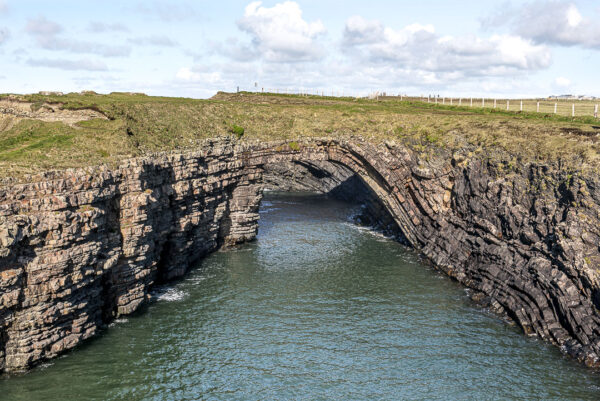
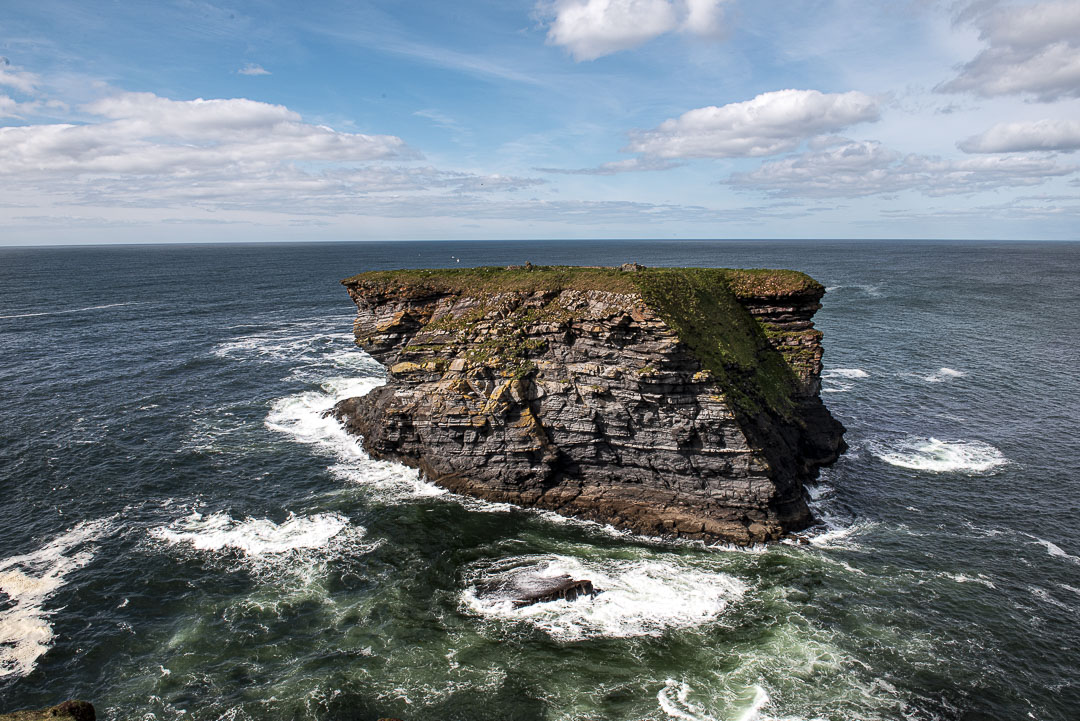
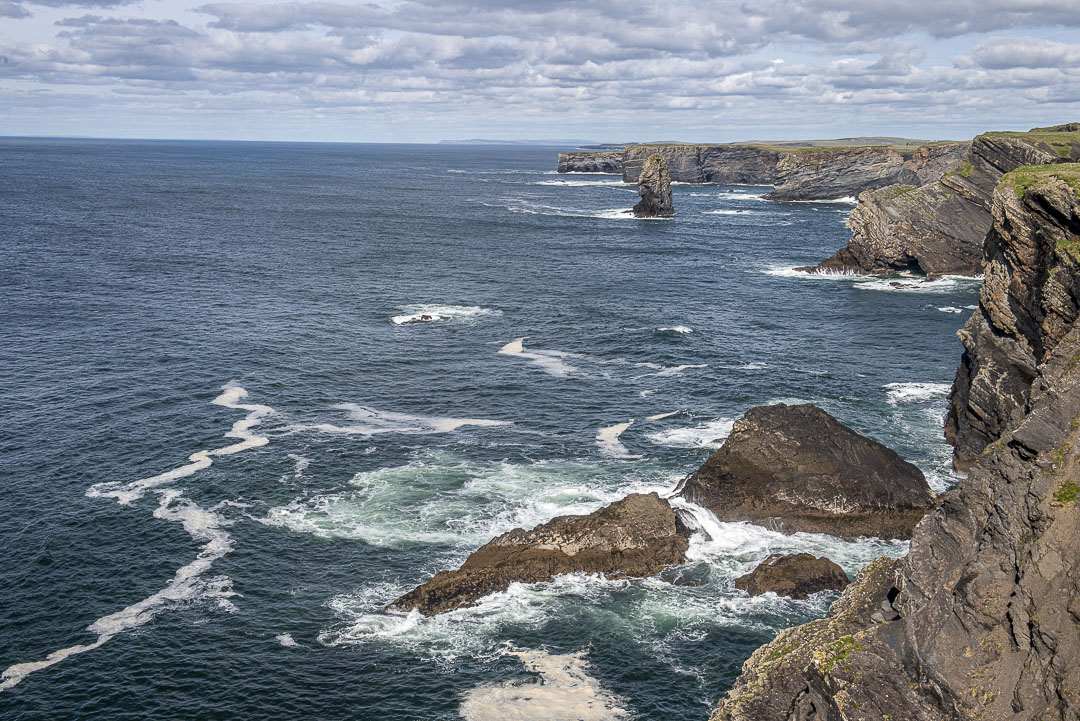
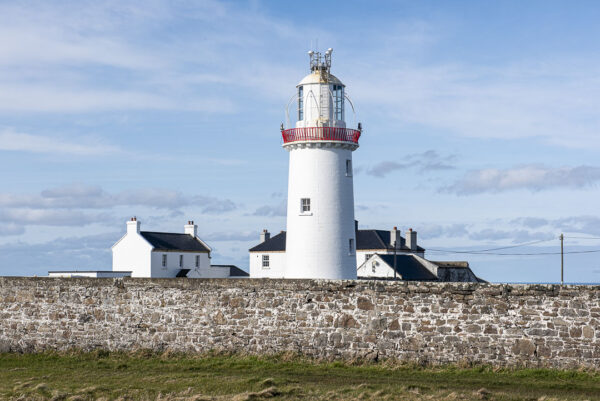
Heading north along the western shoreline, an unspoilt area with increasable low lying rock formations, green fields of meadow grassland glowing bright green in the low sunlight and bordered by white / grey stone walls, mud banks and bogs.
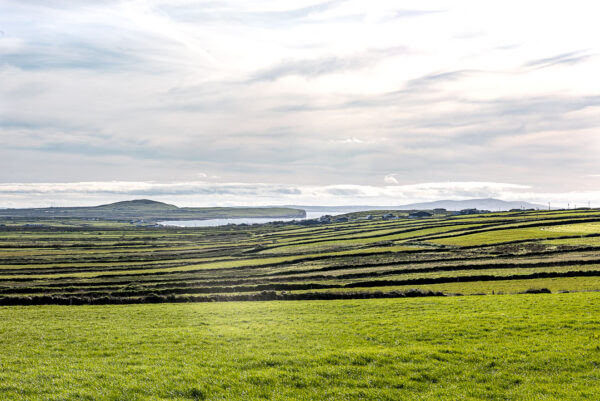
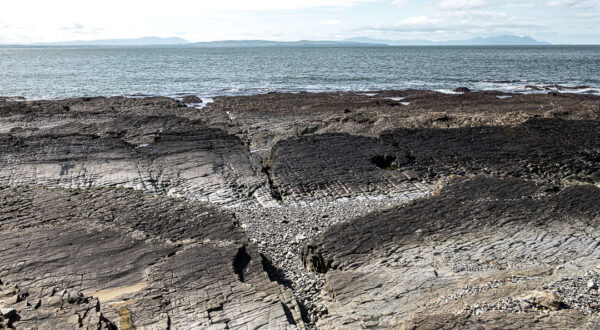
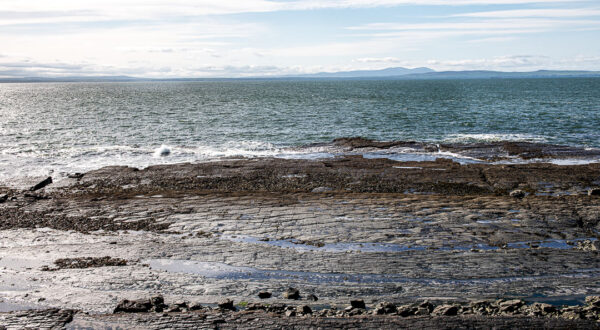
The coastal rock formations were just amazing, and being a photographer, I couldn’t put my camera down. These low lying rock formations, pavements, areas that seemed to be cobbled, the great masses of pavement stone broken up by strips of white pebbles. A background of the calm Shannon River, tones of blue and green in colour with a backdrop of the mountains of northern Kerry. Clear blue skies with a scatter of white fluffy clouds added to the clarity and a pallet of pure colours.
I met a couple with their young family on holiday from Germany. Their young kids were exploring the rocks and had gathered a few Limpet shells. I said to her “isn’t that beautiful”. She replied, “yes, we love this sense of freedom and the un-disturbed nature. It is stunning.”
Kept along the coast road always heading north. Came across a sandy bay, College Strand. The tide was out and a number of oyster pots were exposed along the shore and a man collecting “Winkles”. These shellfish only thrive in clean, un-polluted waters. Further on, on the other side of the bay is “Glasheen Beach” A small beach with steep rock faces left and right. Stayed a while before setting off for Kilkee Cliffs.
Well, these cliffs were the icing on the cake!
These impressive cliffs, some rising 214 meters (712 feet) above the Atlantic Ocean. Access to the cliffs are an easy walk with grass hiking trails working their way along the cliff tops. It’s free as well! The area is as natural as you can imagine, un-spoilt by mass tourism and a space where you can relax and enjoy the wild Atlantic seas, and the wild nature that survive along these mighty cliffs.
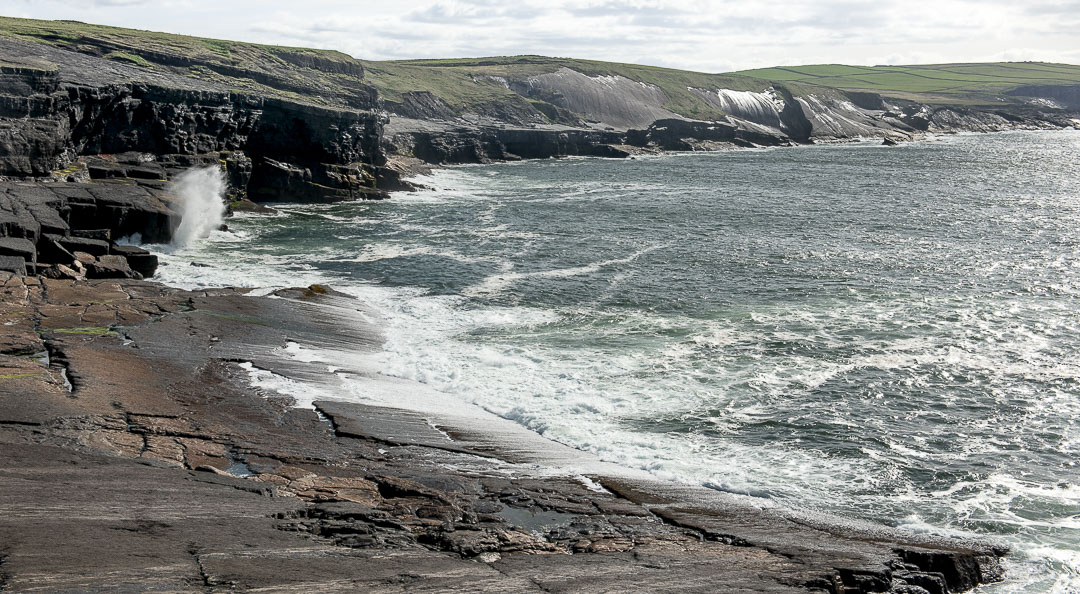

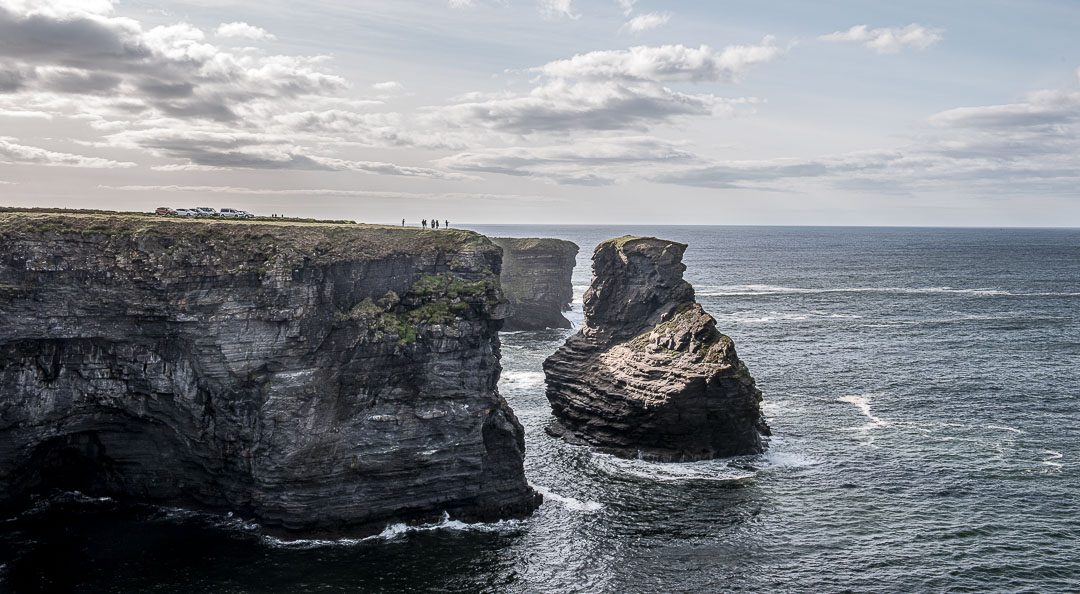
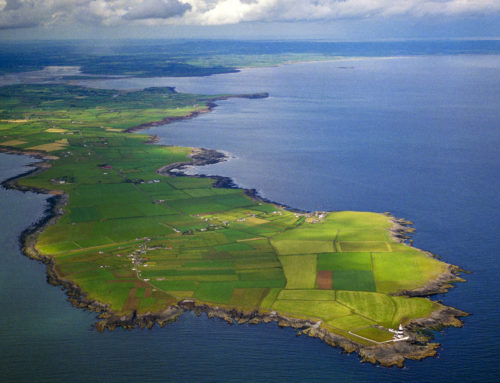
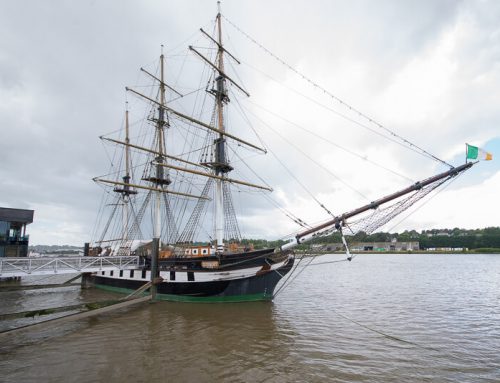
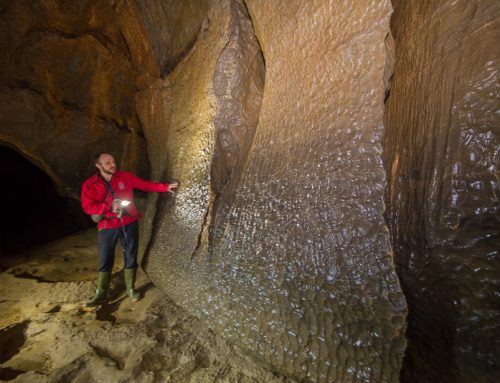
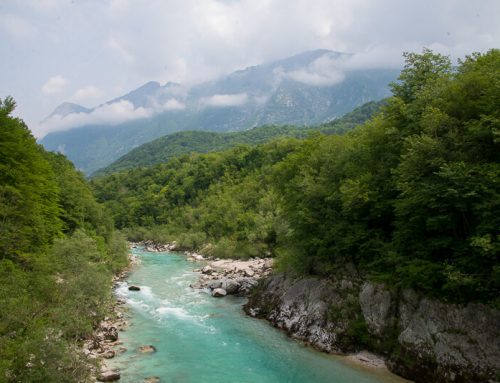
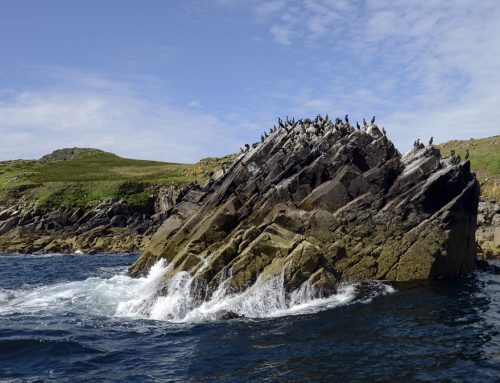
Leave A Comment